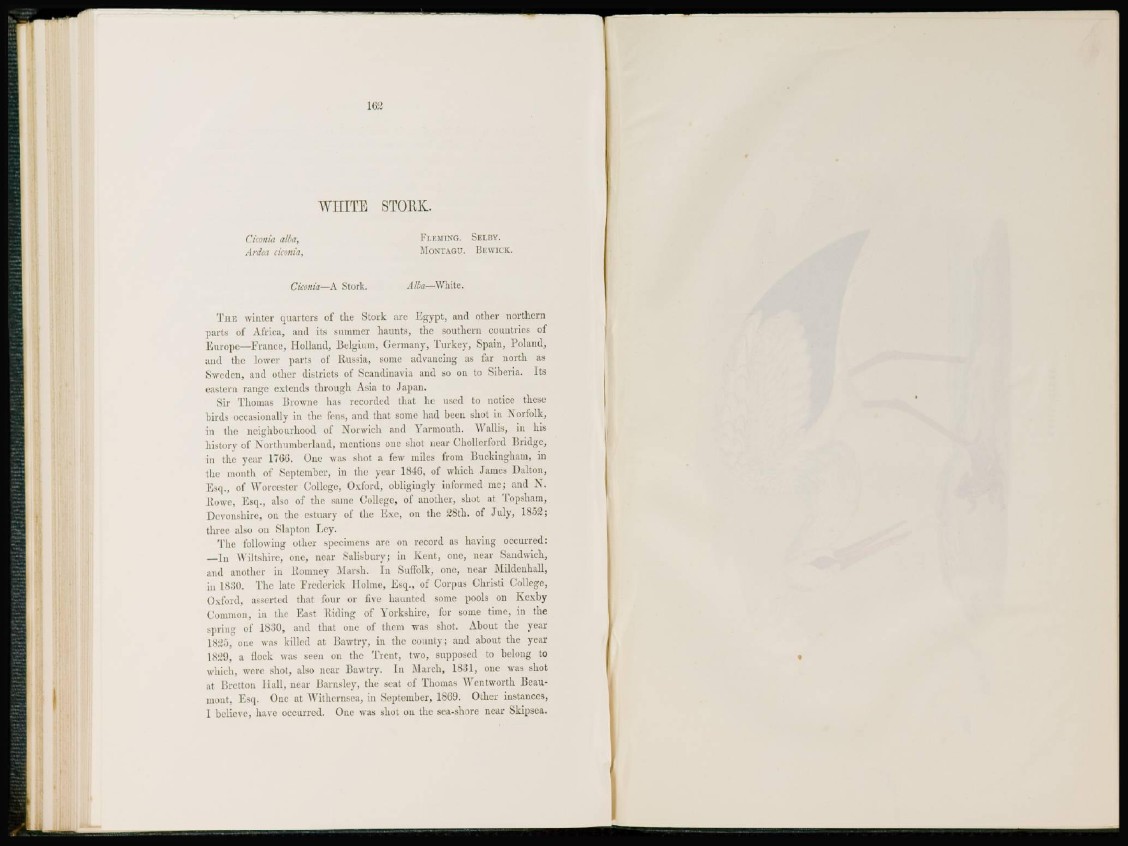
WHITE STORK.
Ckonia alba, FLEMING. SKLBY.
Ardea ckonia, MONTAGU. BEWICK.
Ckonia—A Stork. Alba—White.
THE winter quarters of the Stork are Egypt, and other northern
parts of Africa, and its summer haunts, the southern countries of
Europe—France, Holland, Belgium, Germany, Turkey, Spain, Poland,
and the Lower parts of Russia, some advancing as far north as
Sweden, and other districts of Scandinavia and so on to Siberia. Its
eastern range extends through Asia to Japan.
Sir Thomas Browne has recorded that lie used to notice these
birds occasionally in the fens, and that some had been shot in Norfolk,
in the neighbourhood of Norwich and Yarmouth. Wallis, in his
history of Northumberland, mentions one shot near Chollerford Bridge,
in the year lTGti. One was shot a few miles from Buckingham, in
the month of September, in the year 1846, of which James Dalton,
Esq., of Worcester College, Oxford, obligingly informed me; and N .
Rowe, Esq., also of the same College, of another, shot at Topsham,
Devonshire, on the estuary of the Exe, on the 28th. of July, 1852;
three also on Slapton Ley.
The following other specimens are on record as having occurred:
— 1 ii Wiltshire, one, near Salisbury; in Ivcnt, one, near Sandwich,
and another in Komney Marsh. In Suffolk, one, near Mildenhall,
in 1880. The late Frederick Holme, Esq., of Corpus Christi College,
Oxford, asserted that four or five haunted some pools on Kcxby
('ommon, in the East Riding of Yorkshire, for some time, in the
spring of 1830, and that one of them was shot. About the year
1825, one was killed at Bawtry, in the county; and about the year
1S29, a Hock was seen on the Trent, two, supposed to belong to
which, were shot, also near Bawtry. In March, 1831, one was shot
at Bretton Hall, near Barnsley, the seat of Thomas Wentworth Beaumont,
Esq. One at Witherusea, in September, 1869. Other instances,
I believe, have occurred. One was shot on the sea-shore near Skipsca.
I